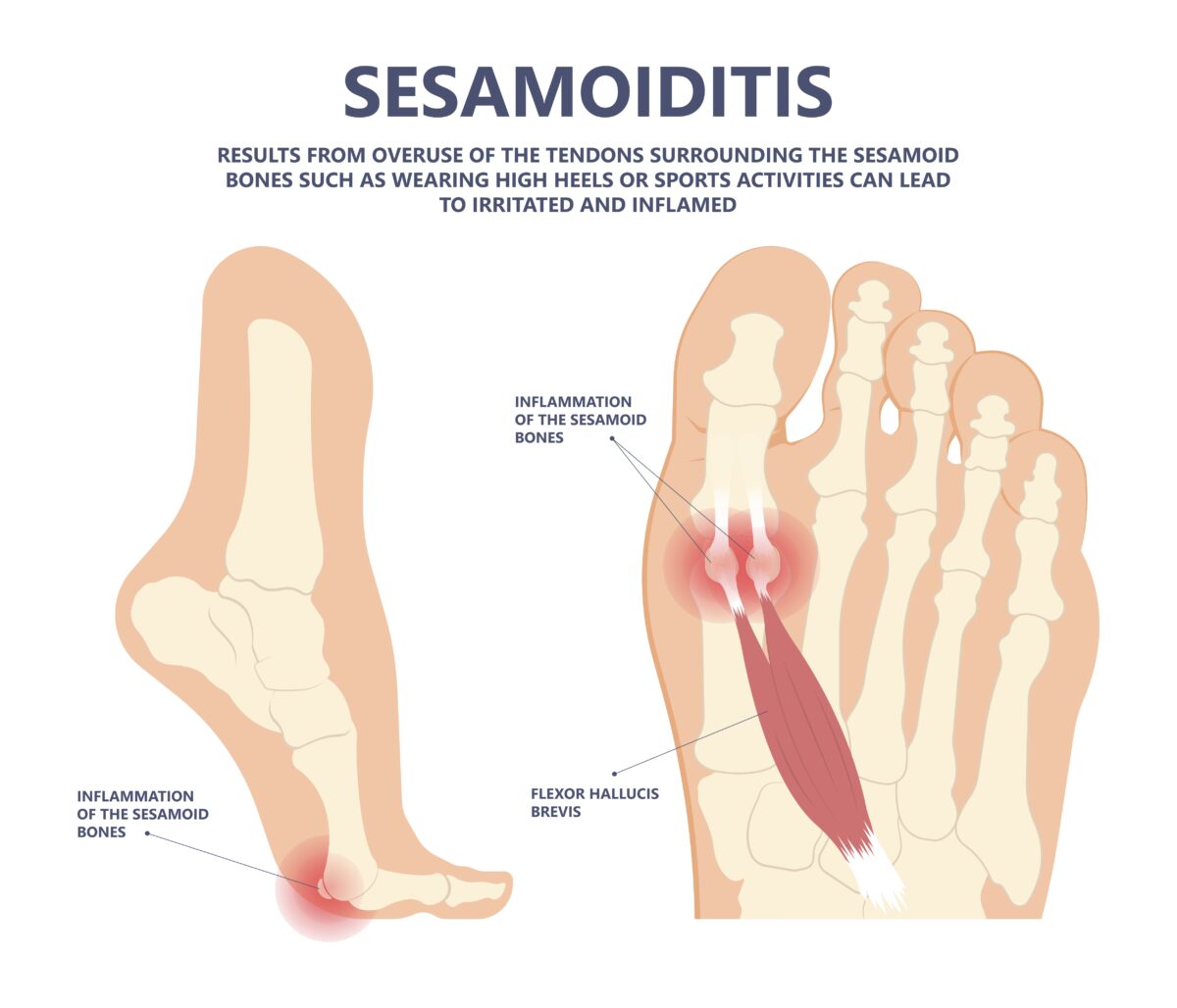Sesamoiditis
This article does not constitute as medical advice.
If you are experiencing symptoms, contact your doctor or make an appointment.
This article does not constitute as medical advice.
If you are experiencing symptoms, contact your doctor or make an appointment.
Sesamoiditis is an inflammation under the big toe in the ball of the foot. Sesamoids are two small bones in the joint beneath the big toe. These bones connect many ligaments in the foot, which can get irritated or inflamed and cause pain. This condition is a common cause of Metatarsalgia. These painful fractures are common among runners, dancers, and those with occupations that require standing all day.
Patients typically develop this condition from overusing the tendons. In addition, those who are involved in intensive activities or are on their feet all day are prone to more inflammation. Those at risk for Sesamoiditis are:
Those who experience this injury tend to endure mild foot aches at first. However, if left untreated, aches develop into more severe pain.
If you believe you have this condition, contact your podiatrist, who can examine the fracture. Depending on the severity of the injury, they will potentially recommend one of the following treatments:
